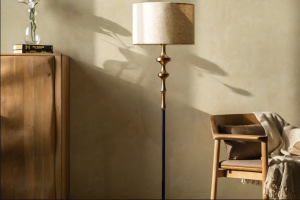
Paper sculpture lanterns represent a unique intersection of art and functionality, merging the delicate beauty of paper craftsmanship with the enchanting glow of light. These lanterns are not merely decorative items; they serve as a canvas for artistic expression, often telling stories or evoking emotions through their intricate designs. The interplay of light and shadow created by the cut-out patterns transforms a simple lantern into a captivating piece of art that can enhance any space, be it a cozy home, a festive gathering, or an artistic exhibition.
The allure of paper sculpture lanterns lies in their versatility. They can be crafted in various styles, from minimalist designs to elaborate, multi-layered structures. Artists often draw inspiration from nature, literature, and cultural motifs, allowing for a wide range of interpretations and personal touches.
As the light filters through the paper, it casts mesmerizing patterns that dance across walls and ceilings, creating an atmosphere that is both serene and magical. This article delves into the rich history of paper sculpture art, the intricate process of creating these lanterns, and the myriad ways to personalize them with literary themes.
History and Origins of Paper Sculpture Art
The art of paper sculpture has deep historical roots, tracing back to ancient civilizations where paper was first invented. The Chinese are credited with developing paper around 105 AD, and it quickly became a medium for artistic expression. Initially used for writing and documentation, paper soon found its way into decorative arts.
By the Tang Dynasty (618-907 AD), intricate paper-cutting techniques emerged, often used in festivals and celebrations to symbolize good fortune and ward off evil spirits. As paper-making techniques spread across Asia and eventually to Europe, the art form evolved. In Europe during the Renaissance, artists began to experiment with paper in new ways, creating elaborate models and dioramas.
The 18th century saw the rise of silhouette art, where artists would cut out profiles from black paper, a precursor to modern paper sculpture. The 20th century brought about a resurgence in paper arts with movements like Dadaism and Surrealism, where artists like Henri Matisse used cut paper to create vibrant compositions. This historical context sets the stage for understanding how contemporary artists have embraced paper sculpture as a medium for innovation and storytelling.
The Process of Creating a Literary Paper Sculpture Lantern
Creating a literary paper sculpture lantern is an intricate process that combines artistic vision with technical skill. The journey begins with conceptualization, where the artist decides on a theme or narrative that resonates with them. This could be inspired by a favorite book, poem, or literary character.
Once the theme is established, sketches are made to visualize how the lantern will look when completed. This stage is crucial as it allows the artist to plan the design elements that will be incorporated into the lantern. After finalizing the design, the next step involves selecting the appropriate type of paper.
Different weights and textures can dramatically affect the final appearance of the lantern. Thinner papers allow for more intricate cuts but may require additional support, while thicker papers provide sturdiness but limit detail. Once the paper is chosen, the artist carefully transfers their design onto it, often using light boxes or tracing methods to ensure accuracy.
The cutting process follows, where precision is key; artists may use craft knives or specialized cutting tools to achieve clean lines and delicate details. After cutting out the design, assembly begins, where pieces are glued or folded together to form the lantern structure.
Materials and Tools Needed for Making a Paper Sculpture Lantern
To embark on creating a paper sculpture lantern, one must gather an array of materials and tools that facilitate both creativity and precision. The primary material is, of course, paper. Artists often choose between various types such as cardstock for sturdiness or rice paper for its translucence and delicate quality.
Each type of paper brings its own aesthetic to the final product; for instance, handmade papers can add texture and uniqueness to the lantern. In addition to paper, essential tools include cutting instruments like craft knives or precision scissors for detailed work. A self-healing cutting mat provides a safe surface for cutting while protecting blades from damage.
Rulers and straight edges are vital for ensuring clean lines during cutting and folding processes. Adhesives such as glue sticks or double-sided tape are necessary for assembling the lantern components securely. For those who wish to incorporate lighting elements into their designs, LED tea lights or string lights are recommended due to their safety and low heat emission compared to traditional candles.
Tips and Techniques for Crafting Intricate Paper Sculpture Designs
Crafting intricate designs in paper sculpture requires not only creativity but also a mastery of techniques that enhance detail and depth. One effective method is layering; by cutting multiple sheets of paper with varying designs and stacking them, artists can create a three-dimensional effect that adds visual interest. This technique allows light to filter through different layers, casting complex shadows that enhance the overall impact of the lantern.
Another important technique is negative space utilization. By strategically leaving areas uncut within a design, artists can create striking contrasts between light and shadow. This approach can be particularly effective in literary-themed lanterns where silhouettes of characters or scenes can be framed by intricate borders or backgrounds.
Additionally, experimenting with different cutting techniques—such as perforation or scoring—can yield unique textures and patterns that elevate the design further. Patience is key; taking time to refine each cut ensures that the final product reflects the artist’s vision accurately.
Ways to Incorporate Literary Themes into Paper Sculpture Lanterns
Incorporating literary themes into paper sculpture lanterns opens up a world of creative possibilities. One approach is to draw directly from texts—using quotes or passages from beloved books as inspiration for design elements. For instance, an artist might choose to create a lantern inspired by “The Great Gatsby,” featuring silhouettes of iconic scenes such as Gatsby’s mansion or the green light across the bay.
By integrating text into the design itself—perhaps by cutting out words or phrases—the lantern becomes not just a visual piece but also a narrative artifact. Another method involves using characters or symbols from literature as focal points in the design. A lantern inspired by “Alice in Wonderland” could feature whimsical elements like teacups or playing cards cut into the structure, while also incorporating quotes from Lewis Carroll’s text around the edges.
This duality enriches the viewer’s experience; they are not only drawn in by the beauty of the lantern but also invited to engage with the story it represents. Additionally, artists can explore themes such as adventure, love, or mystery through their designs, allowing personal interpretations to shine through.
Displaying and Lighting Up Your Paper Sculpture Lantern
Once completed, displaying a paper sculpture lantern becomes an art form in itself. The placement of the lantern can significantly influence its visual impact; positioning it near walls allows shadows to play across surfaces, enhancing its intricate designs. Hanging lanterns from ceilings or branches can create an ethereal atmosphere, especially when illuminated from within.
For outdoor settings, consider using weather-resistant materials or protective coatings to ensure longevity while still allowing light to shine through. Lighting is another crucial aspect that transforms a simple lantern into a captivating centerpiece. LED tea lights are ideal for this purpose as they provide a warm glow without generating heat that could damage delicate paper structures.
For larger installations, string lights can be woven through or around the lantern to create an enchanting effect reminiscent of starlight. Experimenting with different light sources can yield varied results; colored bulbs can add an unexpected twist to traditional designs while dimmers allow for mood adjustments depending on the occasion.
Inspiration and Ideas for Customizing Your Own Paper Sculpture Lantern
The possibilities for customizing paper sculpture lanterns are virtually limitless, making them an exciting project for artists at any skill level. One idea is to create themed lanterns based on seasonal celebrations—think autumn leaves for Halloween or snowflakes for winter holidays—each incorporating relevant literary quotes or motifs that resonate with those times of year. This approach not only enhances festive decor but also invites storytelling into seasonal traditions.
Another avenue for customization is personal storytelling; artists can craft lanterns that reflect their own experiences or memories tied to specific books or poems. For example, a lantern inspired by childhood favorites could feature elements from “The Chronicles of Narnia,” evoking nostalgia while also serving as a conversation starter about literature’s impact on personal growth. Collaborating with friends or family members can also lead to unique creations; each person could contribute their favorite literary themes or characters to a collective display that celebrates shared interests.
In conclusion, crafting paper sculpture lanterns offers an enriching experience that combines artistry with storytelling potential. By exploring historical contexts, mastering techniques, and embracing personal narratives through design choices, artists can create stunning pieces that illuminate both physical spaces and imaginative realms alike.






